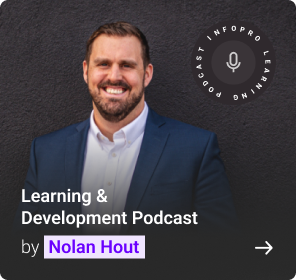Organizations worldwide rank improving employee performance among their top goals. The competition is tough, customer expectations are high, and technology is evolving quickly. In this rapidly evolving context, doing nothing to maintain the status quo only leads to stagnation. This is a breakthrough moment for organizations that need to continuously look for ways to be more productive, perform better, and grow sustainably. Considerable literature is available on diverse approaches; however, perhaps the most robust and increasingly essential practice area that has proven its worth throughout history is performance consulting.
It is not a quick fix or a band-aid to cover chronic issues, but is instead a data-driven, strategic and holistic process that ultimately aims to make organizations work better as a whole — from the contribution of individual employees to strategic goals. This is not just about improving productivity or reducing costs; it’s about creating a culture of continuous improvement, promoting employee engagement, and, ultimately, achieving long-term business success.
Businesses with strategic consulting services can bridge the disconnect between training efforts and broader business objectives to improve employee retention, engagement, and productivity. If there is no alignment, training programs may become counterproductive because employees feel certain programs are ineffective. Well-designed activities, leveraging performance consulting principles, provide relevant content and are delivered using methods that promote knowledge retention and sustained business impact.
What is Performance Consulting?
Organizations always seek growth opportunities, improved performance, or meaningful change in any business environment. Performance consulting is a directed, purposeful process to do just that. This relationship enables organizations to get the most out of their human capital and drive meaningful business impact. Performance consulting is much more than just a training needs assessment.
It is a view that is both deeply collaborative and data-oriented and starts by identifying the most important business problems, going through the root-cause analysis process, and designing customized solutions. This performance-based approach is based on the principle that training is one of many tools available in a larger kit for improvement. Performance consultants, for example, do not default to training because they know it is the universal solution, and they look at data to see what matters most instead. This helps prevent wasteful spending and ensures that solutions meet real needs.
Performance consultants are the strategic partners who work with organizations to maximize the usefulness of processes and projects, driving real change. They are well-versed in many important roles, such as:
- Creating customized training solutions for employees and deploying them.
- Collaborating with senior management to create strategic development opportunities.
- Providing analytical expertise on process improvement and change management.
Whether they work as internal consultants within an organization or as part of a consulting firm, performance consultants are vital to driving organizational performance beyond knowledge and solving problems with measurable results.
Tips for Effective Performance Consulting
To become performance consultants, here are some strategic recommendations for learning leaders to consider:
- Avoid Being the Order-Taker: Resist the tendency to be an order-taker and immediately go to training as the magic bullet for organizational problems. Rather, take a data-driven approach, scrutinizing the situation thoroughly to identify the cause of the performance gap. This investigative approach will discover the actual need to ensure interventions will be appropriately targeted to be effective.
- Master the Consulting Game: Learn how to play the consulting game. This includes learning how to diagnose performance issues, set clear roles and responsibilities, articulate solutions and issues in the way they are, negotiate for buy-in, set up solid success metrics, and give and receive constructive feedback. Effective learning also requires thorough business knowledge to ensure that learning solutions align with organizational objectives.
- Learn the Dynamics of Relationship Management: Relationship management tends to be a fine art. Building relationships and navigating different organizational structures is a fine art. You may have contact with stakeholders directly or with their subordinates. Establishing relationships with these two groups is, without a doubt, the most important thing you can do as a performance consultant.
- Adopt Active Listening as a Critical Skill: Be empathetic and involved with your learners and business partners. You will likely avoid many challenges if you understand what they mean and how they deliver it. Answer with attentive body language, intentional follow-up questions, and a pledge to withhold premature judgments.
- Build a Culture of Measurement and Reporting: Data is the foundation of any informed decision-making process. Regularly measuring and reporting results will lead to more fruitful conversations with stakeholders and help identify what programs should be continued and which learning initiatives will be pursued.
A Blueprint to Build a Performance-Ready Workforce
At Infopro Learning, we use data-driven insights to pinpoint the reasons for performance gaps and create solutions aligned with your business challenges. We help maximize your bottom line with measurable results through a performance consulting approach. We do this by following the below-listed steps:
- Assess: A strategic audit that deep dives into the current state to identify meaningful opportunities and fully understand the existing environment. This background will help further down the road with improvements and advancements.
- Align: A gap analysis of your business requirements vs. the current state of your organization is necessary. But find these gaps and their root causes, and build a common understanding of your organization’s what and why, and you will have a much more successful organization.
- Plan: Create a performance-ready workforce blueprint—a living model that allows you to build impactful solutions by identifying the root causes of performance gaps and leading to lasting results.
- Create Blueprint: Develop a comprehensive workforce development strategy that identifies action plans, initiatives, programs, and interventions to strengthen the workforce. This strategy clarifies a common purpose with stakeholders, leading to coordinated key results and final execution.
- Develop Solutions: Build strong elements of the workforce blueprint, including interactive training workshops, dynamic eLearning modules, on-demand performance support tools, and persuasive marketing materials and assessments. They provide tailored options, allowing organizations to address workforce requirements and fostering impactful learning and tangible skill growth.
- Change Management: Formulate and execute change management strategies to enable the company and its employees to adopt the new system easily. Change management helps to reduce resistance, develop buy-in and ensure seamless implementation, which drives long-lasting performance improvement.
- Measure Outcomes: Continuously evaluate, track progress, analyze performance data, and measure impact to drive ongoing improvement. Measuring outcomes enables organizations to prove return on investment (ROI), identify areas for improvement, and make data-driven decisions to increase effectiveness.
- Optimize: Use feedback and performance data to improve workforce development processes continuously to support relevance and effectiveness. Continual optimization empowers the workforce, allowing the organization to adapt and remain relevant in the competitive landscape.
Conclusion
Organizations must ensure their employee training programs align with broader business goals to get the most out of employee training. A data-driven, well-structured approach to competency mapping ensures that training initiatives help close specific skill gaps, are high on employee engagement, and are aligned with organizational success. Thus, the organizations create an agile and high-performing workforce by constantly evaluating and refining training strategies based on performance data and feedback.
If you’re ready to take your employee training strategy to the next level, contact us today to discover how our performance consulting solutions can impact and drive you to measurable results.





